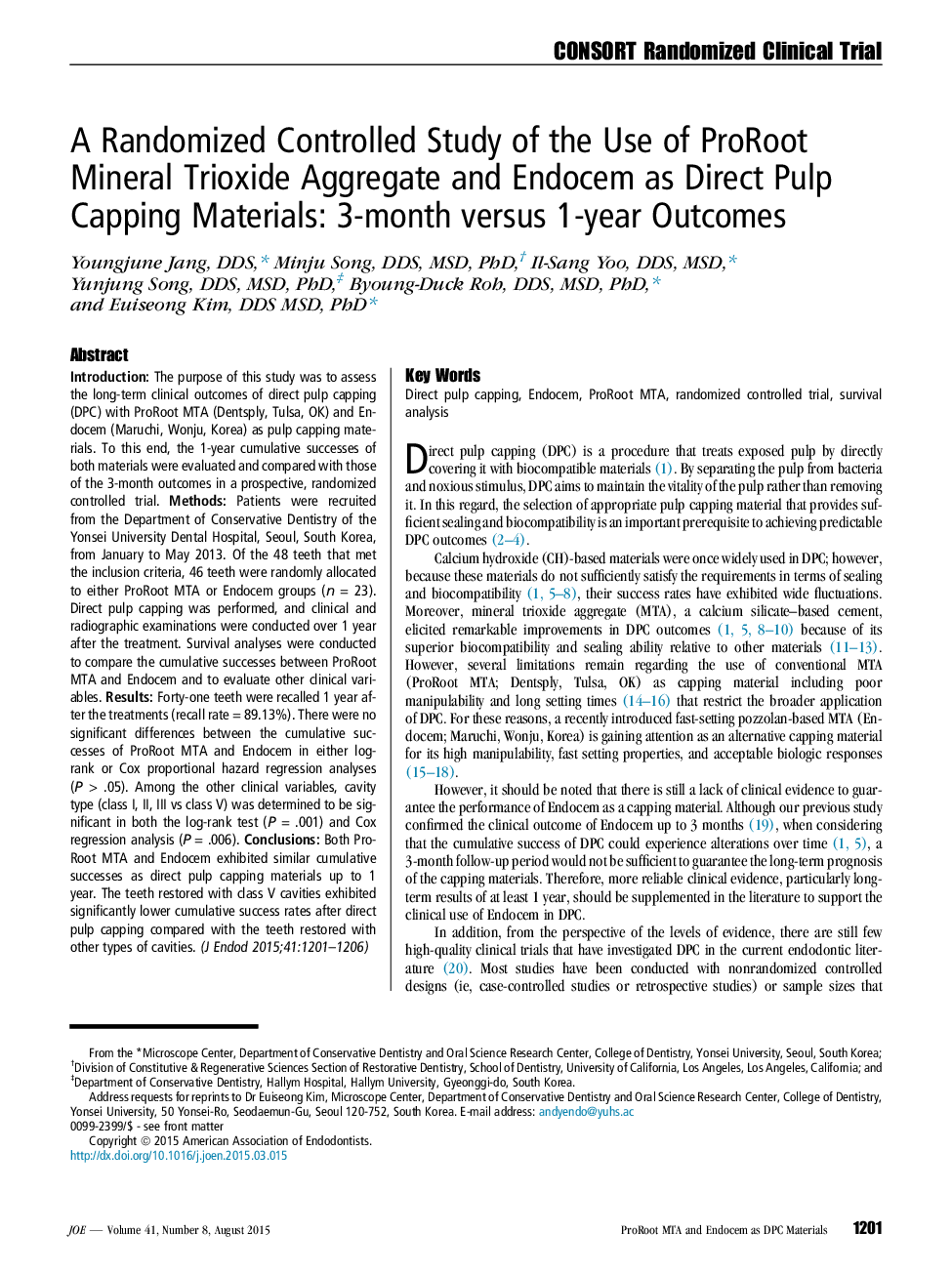| Article ID | Journal | Published Year | Pages | File Type |
|---|---|---|---|---|
| 3147329 | Journal of Endodontics | 2015 | 6 Pages |
IntroductionThe purpose of this study was to assess the long-term clinical outcomes of direct pulp capping (DPC) with ProRoot MTA (Dentsply, Tulsa, OK) and Endocem (Maruchi, Wonju, Korea) as pulp capping materials. To this end, the 1-year cumulative successes of both materials were evaluated and compared with those of the 3-month outcomes in a prospective, randomized controlled trial.MethodsPatients were recruited from the Department of Conservative Dentistry of the Yonsei University Dental Hospital, Seoul, South Korea, from January to May 2013. Of the 48 teeth that met the inclusion criteria, 46 teeth were randomly allocated to either ProRoot MTA or Endocem groups (n = 23). Direct pulp capping was performed, and clinical and radiographic examinations were conducted over 1 year after the treatment. Survival analyses were conducted to compare the cumulative successes between ProRoot MTA and Endocem and to evaluate other clinical variables.ResultsForty-one teeth were recalled 1 year after the treatments (recall rate = 89.13%). There were no significant differences between the cumulative successes of ProRoot MTA and Endocem in either log-rank or Cox proportional hazard regression analyses (P > .05). Among the other clinical variables, cavity type (class I, II, III vs class V) was determined to be significant in both the log-rank test (P = .001) and Cox regression analysis (P = .006).ConclusionsBoth ProRoot MTA and Endocem exhibited similar cumulative successes as direct pulp capping materials up to 1 year. The teeth restored with class V cavities exhibited significantly lower cumulative success rates after direct pulp capping compared with the teeth restored with other types of cavities.
